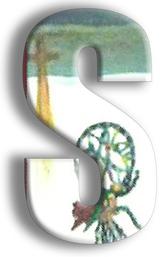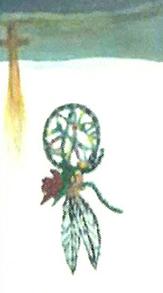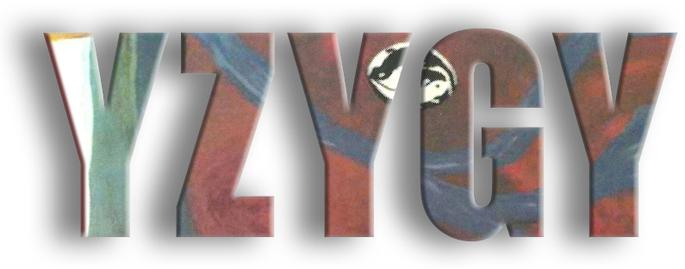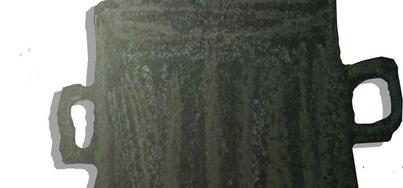MEMOIR LOGO CONCEPT: The aleph and a Sufi mystic inspired my creation and design of the syzygy logo, which I initially based on the symbolism of the yin and yang.
But the concept expanded when I first saw the aleph in Judith Cornell’s
Mandala Healing Kit, My inexplicable attraction to it led me to incorporate it into my logo before I knew what it meant.
I later read that the “Aleph (the first letter of the sacred Hebrew alphabet) embodies the primordial, divine potential of the universe. ... Aleph contains all the universe’s potential and all of its emptiness simultaneously. Aleph represents a dynamic process of movement from unity to diversity and back to unity,” Jennifer Judelsohn, Songs of Creation.
And the mystic poet Rumi inspired me to use the fire and water concept after I read The Question. Here is an excerpt:
“The presence is there in front of me. A fire on the left, a lovely stream on the right.
One group walks toward the fire, into the fire. Another toward the sweet flowing water.
No one knows which are blessed and which are not.
Whoever walks into the fire appears suddenly in the stream.
A head goes under water, and that head pokes out of the fire.”
LOGO ART: Cropped fire and water images from Free Images.
LOTUS LOGO: In spiritual and religious literature, “the lotus is a symbol for the macrocosm and the microcosm, the universe and man. The lotus represents the divinity of the cosmos as well as the divinity of man.
The lotus is the center of the infinite, omnipresent consciousness which connects with the consciousness of the universe. Through the intuition, one of man’s divine gifts, the spiritual student can see the infinite, omnipresent consciousness as the lotus flower within himself.”
LOTUS ART: Courtesy
Homestead, my website service provider. (Temporary art while I design of my own lotus logo.)
TO DOWNLOAD FREE SAMPLE CHAPTER OF SYZYGY:
THE MEMOIR
TO BUY MEMOIR
(Thru Amazon)
THE MEMOIR
CROSSING THE BRIDGE TO SELF
THE WEBSITE
THE MEMOIR
NEW!
Dreams priceless messages from the unconscious
One day, Jung told Freud about a dream he had had in which he was exploring an old house of many rooms that led to a prehistoric tomb containing two skulls and some bones. But Jung said he instantly regretted telling Freud, knowing the associations that Freud would make to the skulls, based on Jung’s fascination with mummified corpses while they were visiting a museum together in 1909. While Jung thought his fascination with mummies and corpses reflected his interests in comparative anatomy and paleontology, Freud preferred to think of Jung’s fascination with the mummies as Jung’s repressed wish that Freud would die sooner rather than later. Reluctant to tell Freud his own thoughts on his own dream, fearing an “almost unbridgeable gap between their mental outlooks,” Jung said he spontaneously lied to Freud, suggesting an association between the human remains to perhaps an unfulfilled death wish of one of his relatives: “This was neither elegant nor morally defensible,” Jung said, “but otherwise I should have risked a fatal row with Freud—and I did not feel up to that for many reasons.”
Jung said it was in this moment, however, that he had had a “sudden and most unexpected insight into the fact that my dream meant myself, my life and my world, my whole reality against a theoretical structure erected by another, strange for reasons and purposes of its own. It was not Freud’s dream. It was mine; and I understood suddenly in a flash what my dream meant.”
Jung became consciously aware that the symbols in his dream not only conveyed meaning, but they conveyed meaning specific to him, and meaning that could only be understood by him. Perhaps this insight, this sudden flash of understanding, was God’s way of speaking to Jung.
Why doesn’t God speak to us anymore?
In his conclusion to “Approaching the Unconscious,” Jung draws a picture of modernity where great intellect is worshiped, where man has become subservient to his own creations—despite the brain’s creepy ability to create things that will destroy itself. And in the lauding of its own achievements, knowledge has chased god out of every tree, river, mountain, and animal. It isn’t that God has stopped talking to us, it is that we have stopped listening. Buddhists disregard the unconscious as fantasy, Christians can’t see their unconscious through their Church and Bible, and the conscious intellect thinks it is itself the total psyche.
Jung said we have become so captivated by the goddess of Reason, “our greatest and most tragic illusion,” that we have forgotten the most basic Truth:
“We have forgotten the age-old fact that God speaks chiefly through dreams and visions.” It is up to us to listen, to learn the language of our individual souls, that is, to hear God we must study and analyze the symbols in our dreams. It is a unique language. No one can teach it to us. ♂ ♀
Some view the unconscious as a trash can, but to Jung it is a fertile bed, out of which dreams “grow up from the dark depths of the mind like a lotus and form a most important part of the subliminal psyche.”
Jung says to hear God, we must first listen, re-learn language of our souls
a
According to Carl G. Jung, the differences between his and Freud’s dream theories were far more reaching than Freud’s wish-fulfillment theory or Freud’s theory that dream symbols represent man’s repressed sexual or biological drives. Even in the last year of his life, Jung wrote, “Nobody can say anything against Freud’s theory of repression and wish fulfillment as apparent causes of dream symbolism.”
Although Jung accepted many of Freud’s premises, such as the existence of the unconscious, certain phenomena began to present themselves to Jung that prompted him to diverge from Freud’s ideas, leading Jung to approach psychology—and dreams—in a whole new way. The following is my own little summarizing twist on just a few basic concepts Jung discussed in “Approaching the Unconscious,” the keynote chapter in his book, Man and His Symbols.
Freud’s trash another Jung man’s treasure
Jung and Freud concur, as most of us would, that our dreams often contain elements that did not originate in our personal experience. Freud calls these elements “archaic remnants,” implying they are meaningless, lifeless psychic leftovers from yester yore. But Jung prefers to think of them as “archetypes,” living, valuable links between our current conscious thoughts and our primitive unconscious instincts.
Characteristic of the notion of “archaic remnants” is the idea that the unconscious is an unglorified trash collector, perhaps running around and picking up the litter after the parade. But to Jung, the unconscious might more resemble a rich compost pile layered with all sorts of subliminal urges, impulses, intentions, perceptions, intuitions, feelings, and thoughts, out of which—out of the depths of one’s unconsciousness, out of the “trash can”—brand new ideas can sprout, like a lotus rising out of the depths of muddy water, more like a fascinating float in the parade than an empty cup afterward.
Freud zigzags dreams; Jung circles them
Using dreams as a starting point, Freud employed a technique originated by him, which he called “free association,” whereby patients depart from their dreams in a train of seemingly random thoughts that would eventually arrive at the source of their unconscious problem, or “complex,” that is, repressed information that is likely causing the patient’s psychological disturbance.
sss
Galvanometer supports Freud’s theory
Published in 1906, Jung’s Studies in Word Analysis supported Freud’s theory, demonstrating how a galvanometer, which measured tension in the skin when random words were spoken, provided entry points worthy of psychoanalytical exploration. But when Jung realized that patients could also arrive at their complexes by meditating on a crystal ball or a prayer wheel or a modern painting, he began to think that the word association method was just one of many approaches to the unconscious, and that dreams in particular must play some other specific role.
Jung said his doubts really began when a colleague relayed a story of how he fell into a daydream on a long train ride—relaxed and immersed in the symbols of a language he didn’t know (written on the railway walls)—and how his unconscious thought process led him to some long-forgotten, disagreeable emotions. Jung said the account opened his eyes to the idea that the route to a patient’s unconscious complex can start from almost any point: from pondering Cyrillic letters or even from a trivial conversation.
Thereafter, rather than follow the zigzag line of associations that lured patients away from their dreams toward staple complexes, Jung began to ponder the structure and content of the dream itself, which culminated in his development of a circular approach to dreams, which required great vigilance because his patients seemed quite eager to break from their dreams and explore other avenues. Jung found he had to repeatedly say to his patients, “Let’s get back to your dream. What does the dream say?”
Indeed, what does the dream say?
© 1955–2019 Syzygy: Crossing the Bridge to Self. All Rights Reserved.












